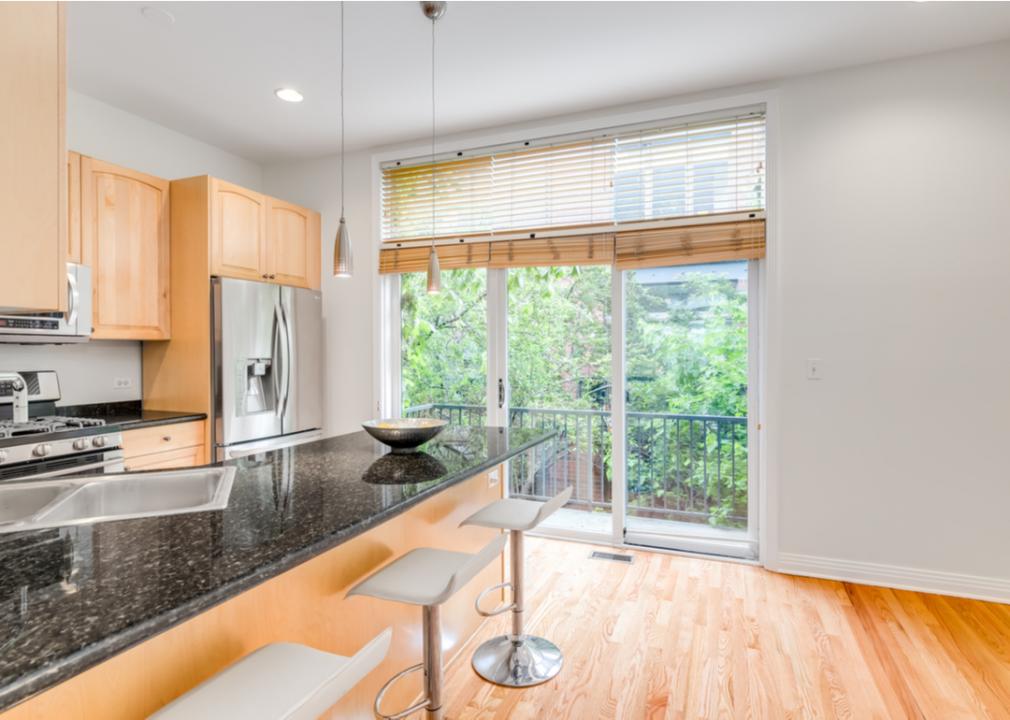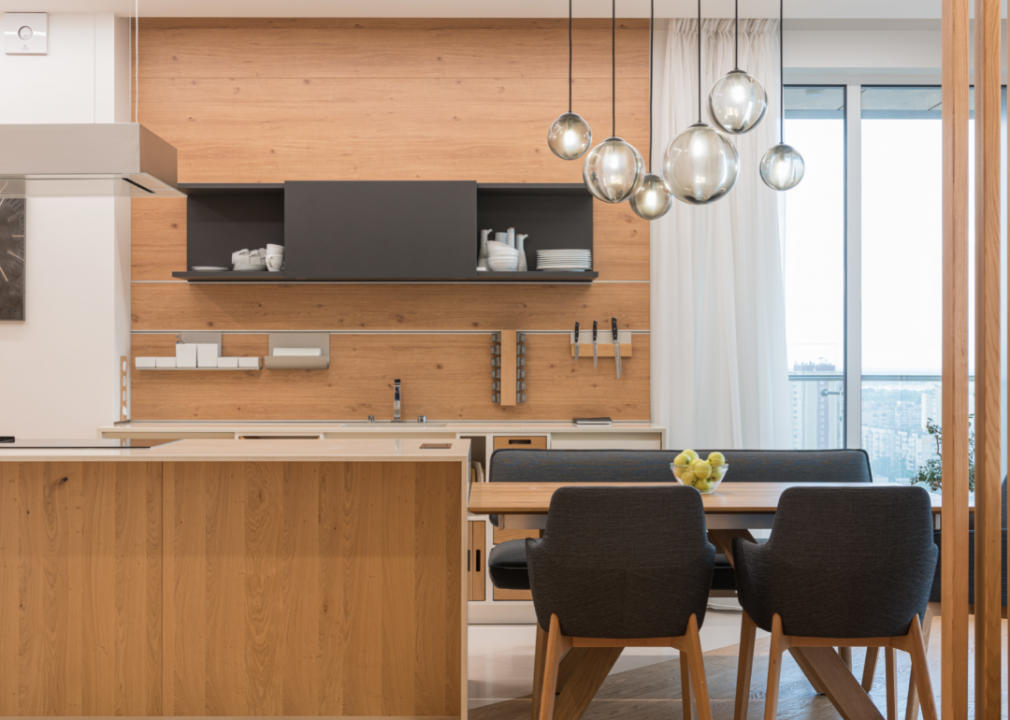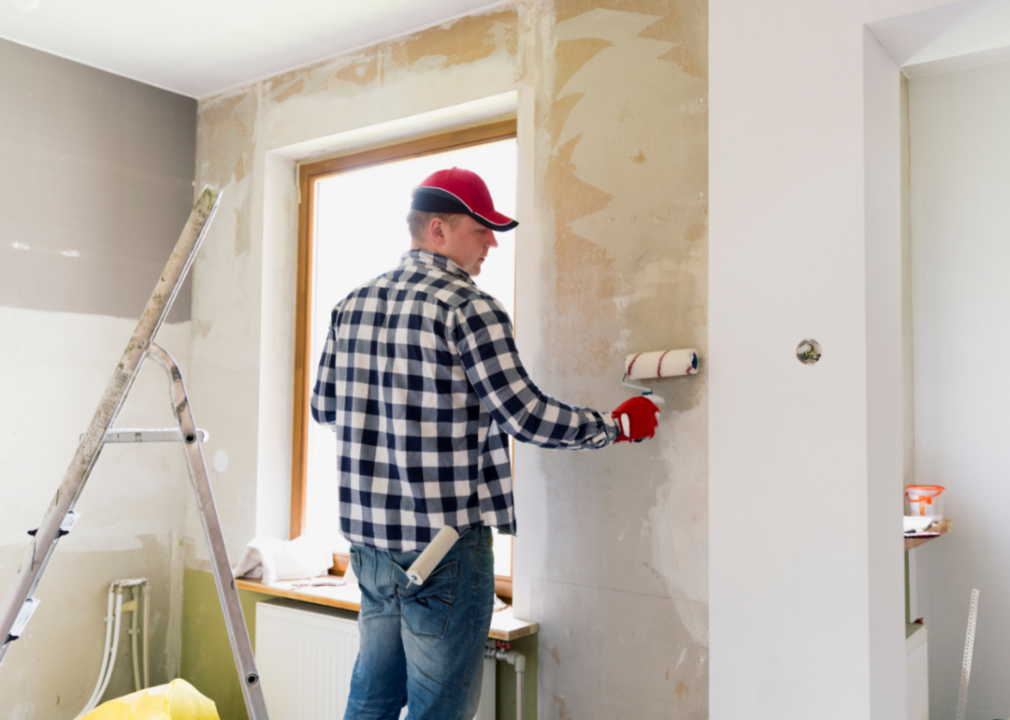10 statistics that show the state of home flipping in America today

Jaruwan Jaiyangyuen // Shutterstock
10 statistics that show the state of home flipping in America today
Home flipping—making a profit from a home purchase after sprucing up the property to sell it quickly—has become a popular way to make money in the real estate market.
Today, you can find countless training seminars for potential home flippers and can hardly channel surf without stumbling onto a house-flipping show giving viewers an inside look at what happens in the process. But beyond its popularity is the reality that this segment of the real estate industry fluctuates often and has seen more than its fair share of ups and downs.
UpNest analyzed ATTOM’s Year-End 2020 U.S. Home-Flipping Report and identified 10 statistics that give a holistic look at the state of the American home-flipping industry today.
The report includes several key takeaways—from the number of homes being flipped by investors dropping for the first time since 2014, to more investors favoring cash purchases than financing. UpNest takes a deep dive, unpacking the most relevant statistics.
To find out more about the American home-flipping industry and how it fared in 2020—including how overall profits rose as profit margins dipped, and how flipping activity declined in 2020—join UpNest as it brings you 10 eye-opening statistics.
![]()

Joe Hendrickson // Shutterstock
Average ROI fell to 40.5% of the original acquisition price
Returns on homes decreased for the third year in a row. By comparison, 2019 average ROI was 41.5% and 46.4% in 2018. The average 2020 ROI was off more than 10% from peaks over the past decade in 2016 and 2017, and the 2020 ROI was the lowest it’s been since 2011. The average ROI percentage does not take into account property taxes, renovation expenses, mortgage interest, and other holding costs. Metro areas with a population of 1 million or more that saw the most significant ROI decreases were Jacksonville, Florida, where ROI fell from 52.2% in 2019 to 39.4% in 2020; Richmond, Virginia, with a decrease from 84.4% to 73.6%; Cleveland, from 108.2% to 98.5%; Birmingham, Alabama, with a dip from 65% to 58.6%, and Pittsburgh, with a year-over-year ROI decrease of 4%, from 133.8% to 128.1%.

M_Agency // Shutterstock
58.3% of home flips were purchased with cash, 41.7% with financing
The number of home flips purchased with cash saw an increase in 2020, up from 57.7% in 2019, proving that cash remains king. In 2018, cash-purchased home flips came in at 58.2%. Homes purchased through financing dropped from 42.3% the previous year and came in at 41.8% in 2019. However, in a year-over-year fourth-quarter comparison from 2019 to 2020, there was an increase of 1.5% of flipped homes purchased with financing. The metropolitan areas—with populations of 1 million and up—that had the highest percentage of flips using financing included southern Tuscaloosa, Alabama, at 80.4%; Charlottesville, Virginia, at 72%; Lexington, Kentucky, at 74.8%; Syracuse, New York, at 67%; and Duluth, Minnesota, at just under 67%.

Andrew Angelov // Shutterstock
5.9% of all home sales in 2020 were flipped homes
Flipped home sales dropped by 13.1% in 2020. In 2019, flipped home sales represented 6.3% of all home sales. In 2020, 241,630 homes and condos were flipped, while 245,864 were flipped the year prior, which was an increase of 2% from 2018. The 2019 sales numbers for flipped homes were the highest they’d been in eight years. While the market may be changing, experts are unsure if this decline in sales represents a temporary shift in the home-flipping market or a more permanent one. In 2020, gross flipping profit was up while sales were down, which was the exact opposite of 2019 when overall flipped home sales were up, but gross profit was down.

Canva
Average flipping profits are the highest since 2005
Average gross flipping profit sits at the highest number since at least 2005 at $66,300 above median purchase price. Though there was a decline in flipping activity in 2020, gross flipping profit has seen a significant increase. Gross profit is the difference between the flipped price and the original purchase price. ATTOM’s methodology does not include any rehab costs or any additional incurred expenses in gross profit. Flippers estimate these expenses normally run between 20% and 33% of the after repair value of the property. The 2020 nationwide gross profit for flipped homes was up from 2019 by 6.6% when the gross profit came in at $62,188.

Canva
The top-five cities that had the greatest increase in ROI in 2020:
While overall flipping returns declined again in 2020, these metro areas—with populations of at least 1 million—saw an increase in ROI. Hartford, Connecticut, had the greatest percentage increase and moved from 70.4% in 2019 to 83.5% in 2020; Rochester, New York, went from 68.4% to 80.4% with a 17.5% increase; Milwaukee, Wisconsin, increased from 64.4% to 76.4%; and Austin, Texas, was up from 12.4% to 23.5%. Philadelphia rounded out the top-five increases in the category and moved from 100% to 107.2% year-over-year.

fizkes // Shutterstock
Home-flipping rates are down in 64% of local markets
The biggest drops to the home-flipping rates in these local markets were in the West and South. San Antonio, Texas, saw the biggest decrease of 27.3%. Nine out of 10 of the most substantial decreases were from these U.S. regions. From 2019 to 2020, 126 of the 198 metropolitan statistical areas (MSA) analyzed in the report saw home flip sales decrease. To qualify for the report, MSAs had to have a minimum of 100 home flips and a population of at least 200,000 in 2020.

Canva
Average time to flip a house increases
The coronavirus pandemic seemed to adversely impact the average flip time on homes. Quarterly flip time averages varied in 2020. From the second quarter to the third, the average number of days to flip a home increased from 184 days to 192 days. The high third-quarter average represented the longest average time since 2003. By comparison, the average time to flip a house was 177 days in 2019 and 178 days in 2018.

korisbo // Shutterstock
31 counties had a home-flipping rate of at least 10%
According to the U.S. Census Bureau, there are 3,143 counties in the United States. The 31 counties with a home-flipping rate of at least 10% came from 741 counties that had at least 50 home flips in 2020. The top five included Macon County, Tennessee, with 14.3%; Lincoln County, Missouri, with 14%; Clayton County, Georgia, with 14%; Shelby County, Tennessee, with 13.8%; and Warren County, Tennessee, with 13.7%. In 2019, there were 34 counties where home flips accounted for at least 10% of all home sales, and they came from 678 counties. The top five included Portsmouth City/County, Virginia; Prince George’s County, Maryland; Macon County, Tennessee; Shelby County, Tennessee; and Clayton County, Georgia.

4 PM production // Shutterstock
10 zip codes had a home-flipping rate of at least 25%
These 10 zip codes came from 6,806 U.S. zip codes with a population of 5,000 or more that had at least 10 home flips for 2020. Five out of the 10 were in Memphis, Tennessee. The top five included 38116 in Shelby County, Memphis, at 31.5%; 45207 in Hamilton County, Cincinnati, at 29.8%; 38127 in Shelby County, Memphis, at 28%; 38115 in Shelby County, Memphis, at 27.8%; and 38128 in Shelby County, Memphis, at 27.5%. By comparison, the top 2019 zip codes came from Texas (McAllen), Alabama (Birmingham), California (south of Fresno), Tennessee (Memphis), and New York (Bronx County).

Rawpixel.com // Shutterstock
Metro areas with the lowest and highest gross-flipping profits
Five cities that had the lowest gross-flipping profits among metro areas had at least 1 million people. In the United States, there are 53 markets with a population of 1 million or more.
There was a $16,000 difference between Raleigh, North Carolina—which was the lowest on the lowest gross-flipping profit on the list, coming in at $30,000—and Charlotte, North Carolina, which was the top of the list. On the opposite side of the coin, the highest gross-flipping profits for metro areas with at least 1 million people included four West Coast cities, all located in California: San Jose, San Francisco, San Diego, and Los Angeles. San Jose had the highest profit at $274,000. New York City also made the list with a gross-flipping profit of $152,000.
This story originally appeared on UpNest and was produced and distributed in partnership with Stacker Studio.